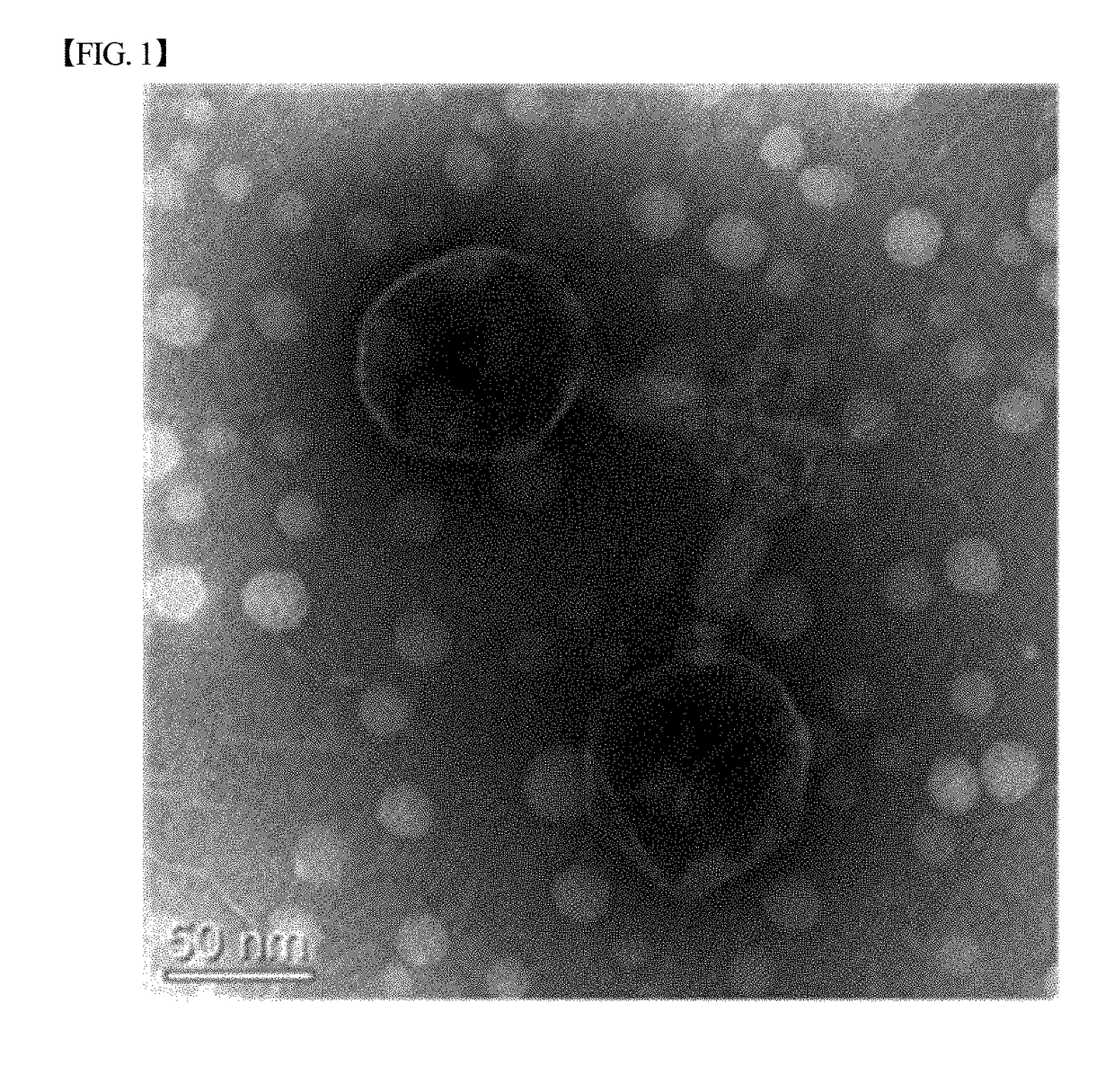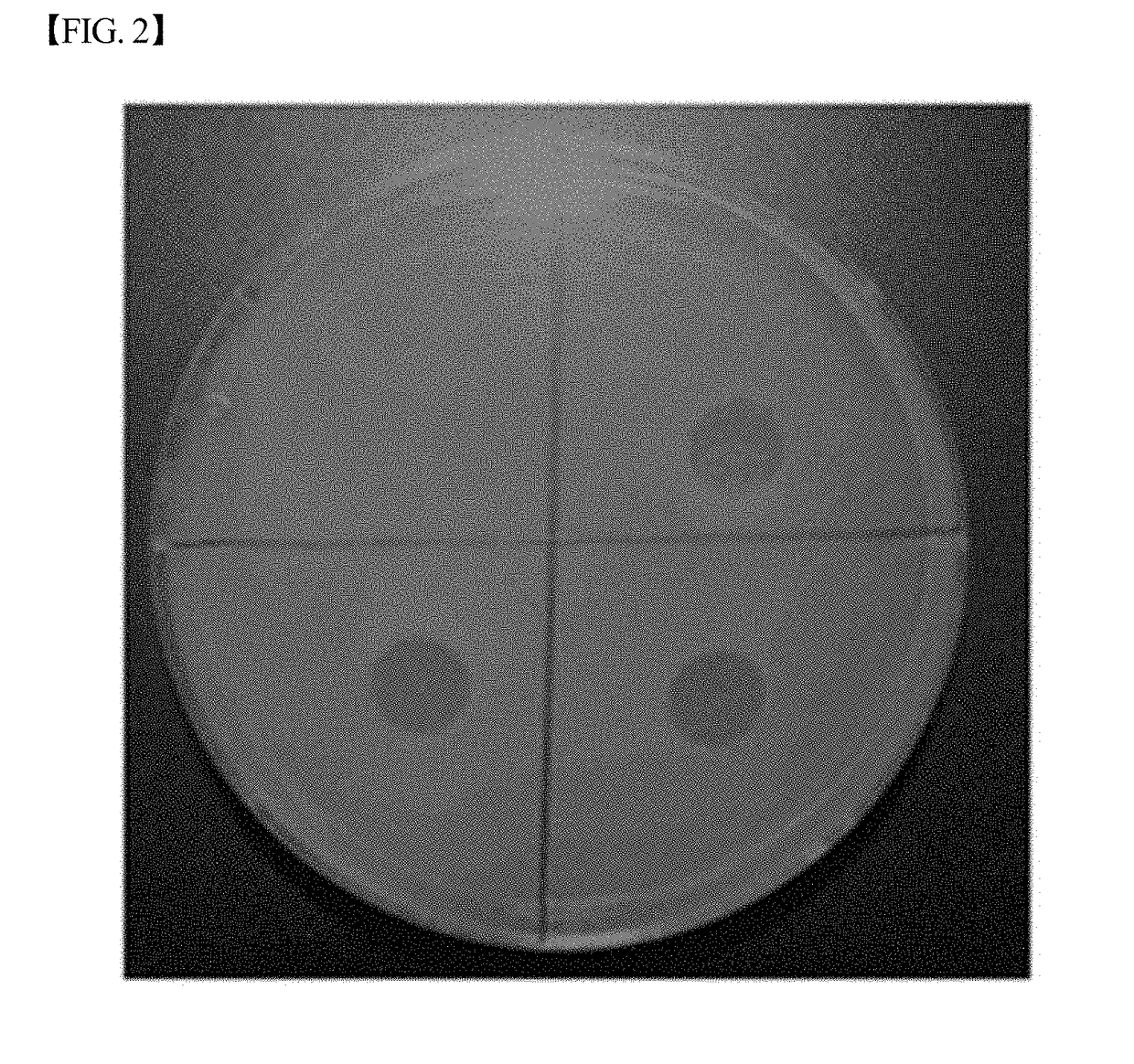Novel pasteurella multocida bacteriophage pas-mup-1 and use thereof for inhibiting proliferation of pasteurella multocida
a bacteriophage and bacteriophage technology, applied in the field of pasteurella multocida bacteriophage pasmup1, can solve the problems of reducing the effectiveness of antibiotics, affecting the economic benefits of livestock farming, and limiting the number of bacterium that can be infected by certain bacteriophage, so as to achieve weak immunity, reduce side effects, and specificity for pasteurella
- Summary
- Abstract
- Description
- Claims
- Application Information
AI Technical Summary
Benefits of technology
Problems solved by technology
Method used
Image
Examples
example 2
n and Sequence Analysis of the Bacteriophage Pas-MUP-1 Genome
[0038]The genome of the bacteriophage Pas-MUP-1 was separated as follows. The genome was separated from the bacteriophage suspension obtained in Example 1. First, in order to eliminate DNA and RNA of Pasteurella multocida cells included in the suspension, DNase I and RNase A were added 200 U each to 10 ml of the bacteriophage suspension, which was incubated at 37° C. for 30 minutes. 30 minutes later, to remove the DNase I and RNase A activity, 500 μl of 0.5 M ethylenediaminetetraacetic acid (EDTA) was added thereto, which was incubated for 10 minutes. The suspension was further incubated at 65° C. for 10 minutes and then added with 100 μl of proteinase K (20 mg / ml) to break the outer wall of the bacteriophage, followed by incubation at 37° C. for 20 minutes. After that, 500 μl of 10% sodium dodecyl sulfate (SDS) solution was added thereto, followed by incubation at 65° C. for 1 hour. 10 ml of the mixture of phenol:chlorofo...
example 7
on of Feed Additives and Feeds
[0050]Feed additives were prepared by adding the bacteriophage Pas-MUP-1 solution at the concentration of 1×108 pfu / g feed additives. The preparation method thereof was as follows: Maltodextrin (50%, w / v) was added to the bacteriophage solution, mixed and then freeze-dried. Lastly, the dried mixture was grinded into fine powders. The drying procedure above can be replaced with drying under a reduced pressure, drying at warm temperature, or drying at room temperature. To prepare the control, feed additives that did not contain the bacteriophage but contained only buffer (10 mM Tris-HCl, 10 mM MgSO4, 0.1% Gelatin, pH 8.0) were prepared.
[0051]The above two kinds of feed additives were mixed with the volume of the 1,000 times volume of feed for pig farming respectively, resulting in two kinds of final feeds.
example 8
on of Disinfectants
[0052]Disinfectants containing bacteriophage Pas-MUP-1 at the concentration of 1×108 pfu / ml were prepared by using the bacteriophage Pas-MUP-1 solution. In detail, to prepare the disinfectant, the bacteriophage Pas-MUP-1 solution at the concentration of 1×108 pfu was added to 1 ml buffer that is used to prepare the bacteriophage solution, and then well mixed. To prepare the control, the buffer itself that is the same with that used for the bacteriophage solution was utilized.
[0053]The two kinds of disinfectants prepared above were diluted in water at the ratio of 1:1000, and then used for final disinfectants.
PUM
 Login to View More
Login to View More Abstract
Description
Claims
Application Information
 Login to View More
Login to View More - R&D
- Intellectual Property
- Life Sciences
- Materials
- Tech Scout
- Unparalleled Data Quality
- Higher Quality Content
- 60% Fewer Hallucinations
Browse by: Latest US Patents, China's latest patents, Technical Efficacy Thesaurus, Application Domain, Technology Topic, Popular Technical Reports.
© 2025 PatSnap. All rights reserved.Legal|Privacy policy|Modern Slavery Act Transparency Statement|Sitemap|About US| Contact US: help@patsnap.com


